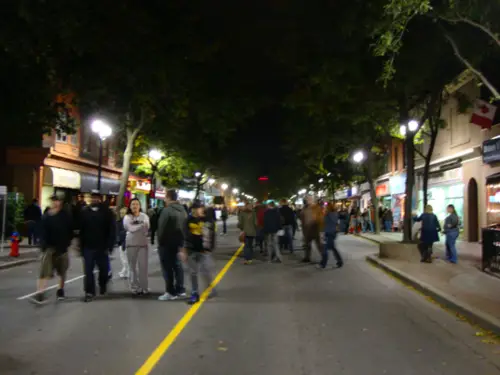The desire to live in a low-crime area with a strong sense of community is one that many people can relate to. Equally, living in the vicinity of those whose lifestyles and backgrounds are similar to your own is also attractive to some. But can we justify creating gated communities like these if it means physically restricting access to those who don’t fulfil the required criteria?
Gated communities can be interpreted as a by-product of society trying to better itself. After World War II ended and the automobile became increasingly affordable, much of America moved to the suburbs. Able to afford private space within driving distance of nearby cities, many young Americans found themselves living better than their parents, enjoying a quality of life that their parents had never been able to enjoy.
With decades passing since the sprawling suburb achieved mass-adoption, gated communities seem like a logical step if new generations are to consider themselves to have more than their parents. With gates being included in developments to provide product differentiation and identity in a swamped housing market, young Americans raised on a potent combination of suburbia and capitalism introduced the notion of the gated community to the world, and the world has further endorsed it.
This global take-up has introduced a vast range of gated developments, from secure areas for the super-wealthy to retirement villages to closed inner-city streets. However, one element remains constant – physical space and social provisions once provided for public access have been privatised. At its most basic, this could simply mean that formerly public streets are now only accessible by residents within the gates. In other developments, leisure facilities are inaccessible to non-residents, and at its most extreme, emergency services are independent of mainstream provisions.
Ignoring wider social context, a mostly privatised existence could be a good thing. Private schooling and healthcare are popular and perceived by their purchasers as being of a higher standard than government equivalents. Could the same logic apply to crime prevention, emergency services, and private governance? The answer to this question is probably irrelevant. There is always a wider social context when making infrastructure decisions, so despite the portion of society existing inside gated communities arguably being socially sustainable, the wider effect felt by society as a whole is definitely not social sustainability.
Whilst opportunities may be distributed fairly within the boundary of a gated community, wider society is excluded. Whether these gated developments are true communities is also debatable. With often stringent standards of conduct, the likelihood of ever meeting a stranger or facing a true cultural challenge is almost nil. Have the extreme regulations of gated developments sanitised life, removing the truth of community?
The forting-up phenomenon has enormous policy consequences. By allowing some citizens to internalize and to exclude others from sharing in their economic privilege, it aims directly at the conceptual base of community. – Edward Blakely and Mary Gail Snyder
Architecture has the power to send a message to the wider world, steering human behaviour with its blend of concrete and ideology. Residents of gated communities are prioritising their own social desires over the needs of society as a whole, and whilst this may ensure sustainability for themselves and other residents, those on the outside are excluded from partaking. By risking alienating and polarising those who have been denied access, gated communities have created a massively imbalanced social system with physical, financial and cultural boundaries.
If the gated community really is a cultural evolution of suburban ambitions, where does the built environment go from here? With generations of children being raised within the boundaries of gated developments where fear and insecurity are cultural drivers, how will their social outlook differ from their parents? The risk of increasing alienation is obvious.
Whilst the internal ongoings of a gated community could be viewed as socially sustainable when ignoring the negative impact on wider society, it is this clause in the analysis that is its downfall. How can one truly consider a gated community to be socially sustainable when you have to ignore the majority of society to conclude that it is so?
Photo: Masaaki Komori


